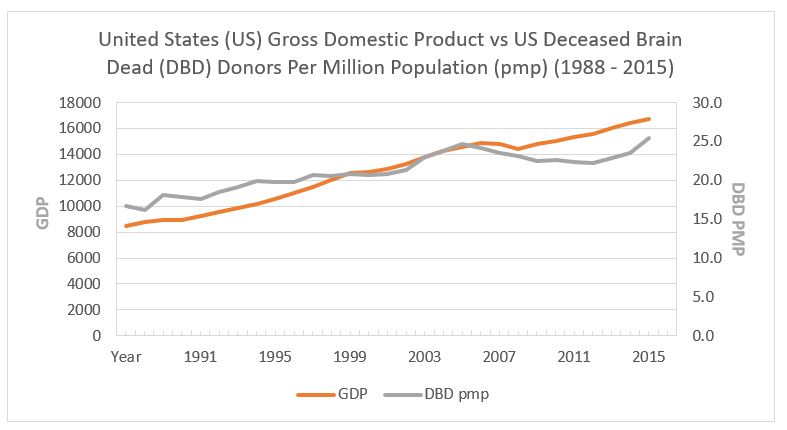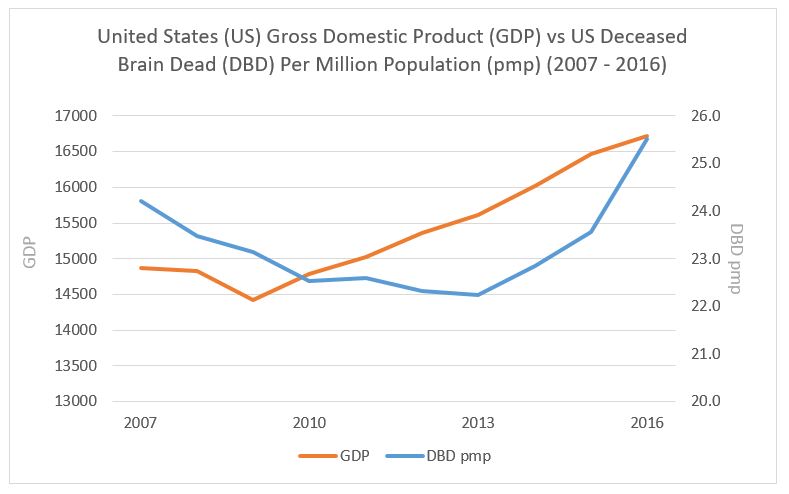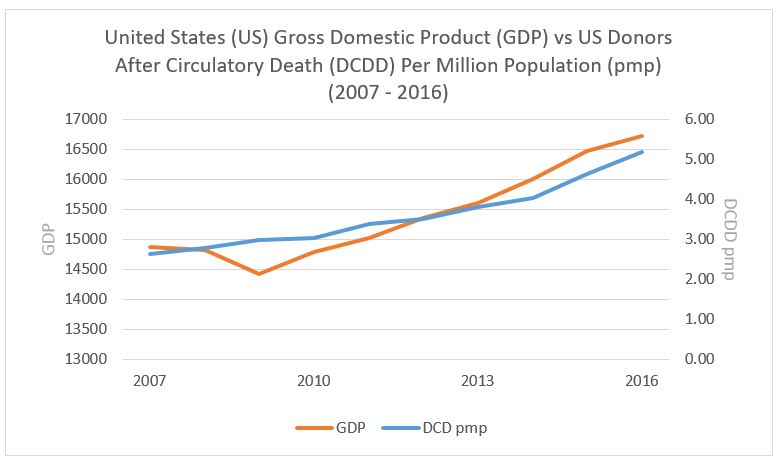The Great Recession and the Importance of Donation After Circulatory Determination of Death (DCDD)
Bryan McDonald1, Paula Lawrence1, Marty Sellers1, Scott Wade1, Jean Davis1.
1LifeLink Foundation, Tampa, FL, United States
Introduction: Review of economic activity trends since 1988 indicates that fluctuations in the economy is associated with an impact on organ donation, specifically a decline in deceased brain dead (DBD) donors. Trending of the Gross Domestic Product (GDP) and changes in the DBD growth rate per million population (pmp) indicates the Great Recession of 2007-2009 with its associated slower recovery rate seems to have had an impact on donation. To ensure continued increases in organ donation, organ procurement organizations must pursue additional sources of deceased organs, e.g. from DCDD donors.
Methods: Review of changes in the United States GDP growth rate and the corresponding growth rate of national DBD and DCDD donors pmp (per OPTN data) was done to determine if concurrent and subsequent growth rates were correlated with GDP fluctuations during the three recessions since 1988: July 1990-March 1991, March 2001-November 2001, and December 2007-June 2009.
Results: During and following each of the recessions prior to the “Great Recession” there was a decrease in the growth rate of DBD donors pmp. In the 1990–91 recession there was a -1.0% change in 1991 and -1.5% in 1992 in DBD donors pmp. These deficits were recovered by 1993. In the 2001 recession there was a -0.2% change with deficits recovered in 2002 (Figure 1).
The “Great Recession” (Figures 2 and 3) noted by a much longer and slower recovery, resulted in a significant and sustained decrease in DBD donors pmp growth rates. For the years 2007-2009 the decreases were -2%, -3%, and -1.4%, respectively, with no immediate post-recession recovery. In fact, annual deficits continued until 2014, resulting in a cumulative loss between 2007-13 of -10% (Figure 2).
In contrast, DCDD pmp growth rates during and following the “Great Recession” remained positive. Overall deceased donors (including DBD and DCDD) pmp growth rates for the years 2007-2009 were -.1%, -2.1% and -.5%, respectively, while DCDD pmp growth rates were 22.1%, 6.3% and 7.4% (Figure 3).
Conclusion: Economic downturns have a negative association with organ donation. During and following each recession since 1988, DBD donors pmp has decreased. DBD donors pmp decreased during and after the Great Recession of 2007-2009 while DCDD donors pmp increased. Our observations show that steady increases in organs from DCDD donors mitigated the impact of economic fluctuations and should be a strong organ recovery focus. Without the positive DCDD impact, overall deceased organ donation would have more significantly declined during/after the Great Recession, leading to an even worse impact on number of organs transplanted and lives saved. Organ procurement organizations should continuously evaluate new practices to counter unpredictable, inevitable lulls in donation especially in times of economic turndown, as the donation recovery phase could be prolonged.


